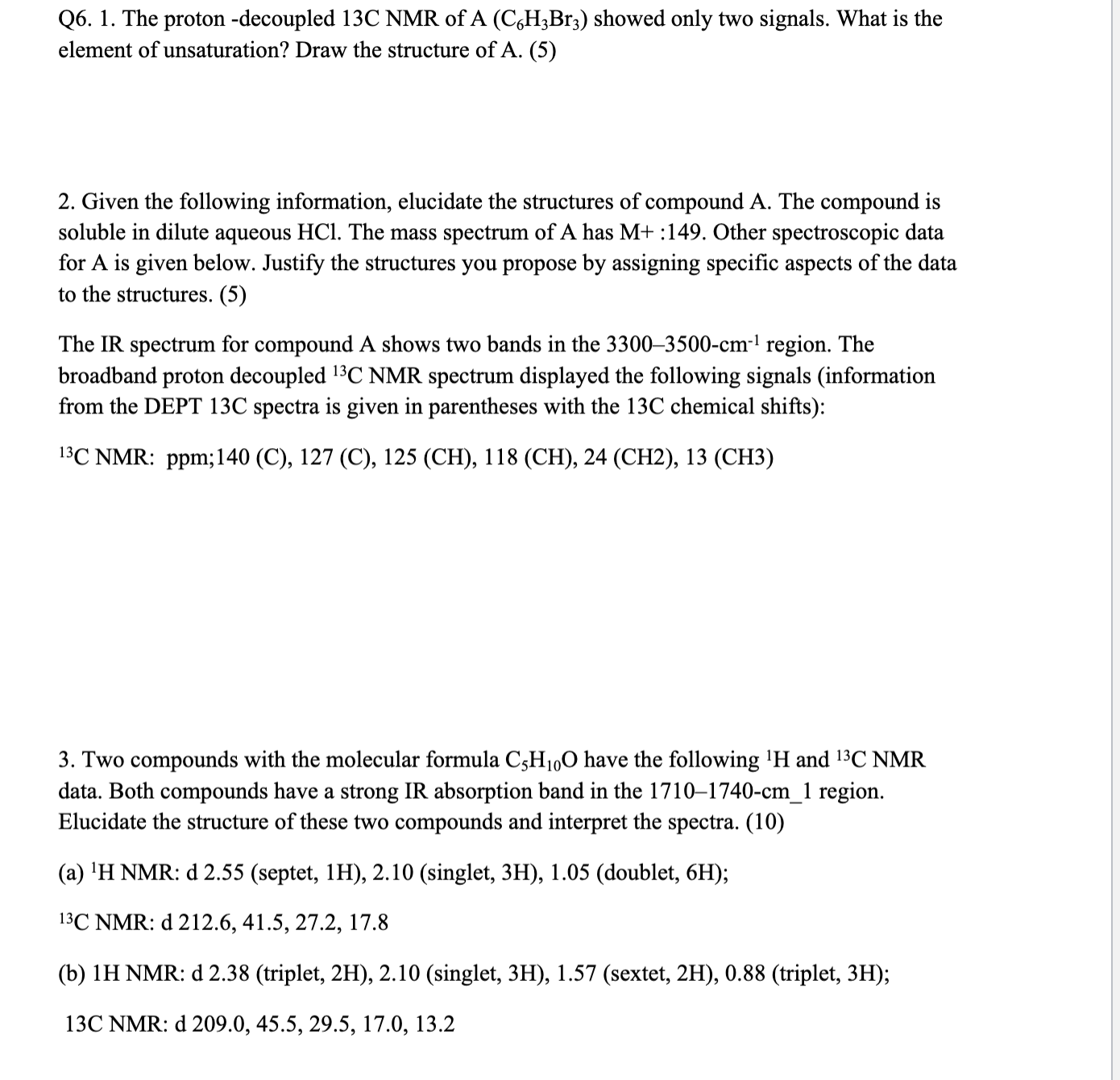Home /
Expert Answers /
Chemistry /
q6-1-the-proton-decoupled-13c-nmr-of-a-c-6-h-3-br-3-showed-only-two-signals-what-is-the-ele-pa420
(Solved): Q6. 1. The proton -decoupled 13C NMR of A(C_(6)H_(3)Br_(3)) showed only two signals. What is the ele ...
Q6. 1. The proton -decoupled 13C NMR of A(C_(6)H_(3)Br_(3)) showed only two signals. What is the
element of unsaturation? Draw the structure of A . (5)
Given the following information, elucidate the structures of compound A . The compound is
soluble in dilute aqueous HCl . The mass spectrum of A has M+:149. Other spectroscopic data
for A is given below. Justify the structures you propose by assigning specific aspects of the data
to the structures. (5)
The IR spectrum for compound A shows two bands in the 3300-3500-cm^(-1) region. The
broadband proton decoupled ^(13)C NMR spectrum displayed the following signals (information
from the DEPT 13C spectra is given in parentheses with the 13C chemical shifts):
^(13) C NMR: ppm; 140(C),127(C),125(CH),118(CH),24(CH2),13(CH3)
Two compounds with the molecular formula C_(5)H_(10)O have the following ^(1)H and ^(13)C NMR
data. Both compounds have a strong IR absorption band in the 1710-1740-cm_(1) region.
Elucidate the structure of these two compounds and interpret the spectra. (10)
(a) ^(1) H NMR: d 2.55 (septet, 1H), 2.10 (singlet, 3H), 1.05 (doublet, 6H);
^(13) C NMR: d 212.6, 41.5, 27.2, 17.8
(b) 1H NMR: d 2.38 (triplet, 2H), 2.10 (singlet, 3H), 1.57 (sextet, 2H), 0.88 (triplet, 3H);
13C NMR: d 209.0, 45.5, 29.5, 17.0, 13.2